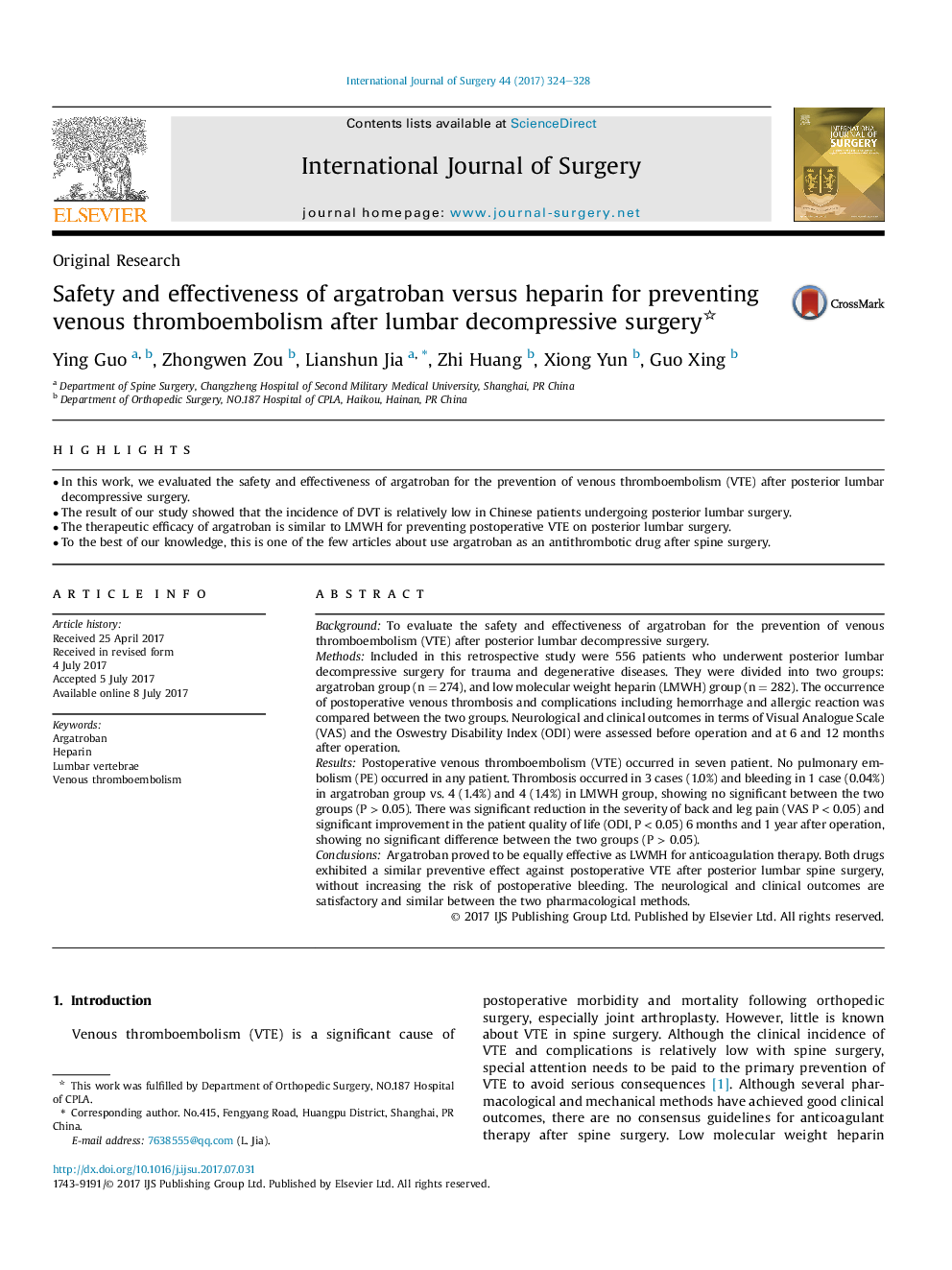| Article ID | Journal | Published Year | Pages | File Type |
|---|---|---|---|---|
| 5731686 | International Journal of Surgery | 2017 | 5 Pages |
â¢In this work, we evaluated the safety and effectiveness of argatroban for the prevention of venous thromboembolism (VTE) after posterior lumbar decompressive surgery.â¢The result of our study showed that the incidence of DVT is relatively low in Chinese patients undergoing posterior lumbar surgery.â¢The therapeutic efficacy of argatroban is similar to LMWH for preventing postoperative VTE on posterior lumbar surgery.â¢To the best of our knowledge, this is one of the few articles about use argatroban as an antithrombotic drug after spine surgery.
BackgroundTo evaluate the safety and effectiveness of argatroban for the prevention of venous thromboembolism (VTE) after posterior lumbar decompressive surgery.MethodsIncluded in this retrospective study were 556 patients who underwent posterior lumbar decompressive surgery for trauma and degenerative diseases. They were divided into two groups: argatroban group (n = 274), and low molecular weight heparin (LMWH) group (n = 282). The occurrence of postoperative venous thrombosis and complications including hemorrhage and allergic reaction was compared between the two groups. Neurological and clinical outcomes in terms of Visual Analogue Scale (VAS) and the Oswestry Disability Index (ODI) were assessed before operation and at 6 and 12 months after operation.ResultsPostoperative venous thromboembolism (VTE) occurred in seven patient. No pulmonary embolism (PE) occurred in any patient. Thrombosis occurred in 3 cases (1.0%) and bleeding in 1 case (0.04%) in argatroban group vs. 4 (1.4%) and 4 (1.4%) in LMWH group, showing no significant between the two groups (P > 0.05). There was significant reduction in the severity of back and leg pain (VAS P < 0.05) and significant improvement in the patient quality of life (ODI, P < 0.05) 6 months and 1 year after operation, showing no significant difference between the two groups (P > 0.05).ConclusionsArgatroban proved to be equally effective as LWMH for anticoagulation therapy. Both drugs exhibited a similar preventive effect against postoperative VTE after posterior lumbar spine surgery, without increasing the risk of postoperative bleeding. The neurological and clinical outcomes are satisfactory and similar between the two pharmacological methods.
